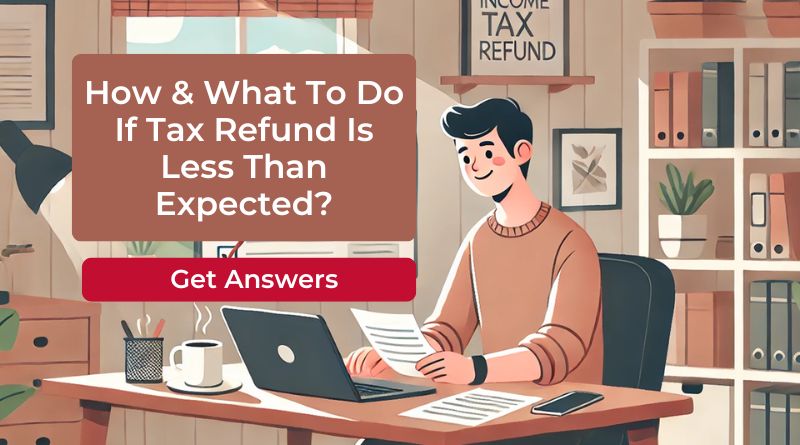Sometimes, taxpayers find that their tax refund is lower than they expected based on their own calculations. In this post, we’ll explain why this might happen and what you can do about it. We’ll cover how the IRS determines lower refunds and discuss a concept called “tax refund offset,” where your refund might be reduced to cover any outstanding debts you owe. We’ll also look at what steps you can take if you believe your refund should be higher. Read on to find out how to handle a smaller-than-expected tax refund and what actions you can take.
How & What To Do If Tax Refund Is Less Than Expected?
If you owe any outstanding debts, your tax refund might be reduced to help pay them off. The Internal Revenue Service (IRS) can take part or all of your refund to cover these debts. The Bureau of Fiscal Services handles this process, sending the money directly to the agency you owe, which could be either a federal or state agency. This is why you might receive a smaller refund than you were expecting. Let’s explore what you can do if your tax refund is less than you anticipated.
Tax Refund 2024- Overview
| Title | How & What To Do If Tax Refund Is Less Than Expected? |
| Year | 2024 |
| Country | United States of America |
| Name of the Agency | Bureau of Fiscal Services |
| Name of the Payment | Tax Refund |
| Official Web Portal | usa.gov |
What To Do If Tax Refund Is Less Than Expected?
If your tax refund is lower than you expected, you can reach out to the Bureau of Fiscal Services. However, they won’t give you details about your debt or refund any money. They can only tell you which agency you owe money to. To get this information, call the Bureau of Fiscal Services at 800-304-3107.
Here’s a list of reasons why your tax refund might be reduced by the IRS: overdue federal taxes, child support payments, student loans, state income tax debt, and other federal non-tax debts, among others.
How Tax Refund Offset Works
If you owe money to a state or federal agency and don’t pay it on time, the agency will send you a letter giving you 60 days to settle the debt. This letter will explain what the debt is for, how much you owe, and that the debt will be deducted from your federal payment.
If you don’t pay the debt within the given time, the agency will forward your information to the Bureau of Fiscal Service (BFS) database. This database checks any payments you’re supposed to receive, like your tax refund. If BFS finds a payment due to you, they will take out the debt amount from it. This is called an administrative offset.
If your payment is reduced, you’ll get a Notice from the authorities. This Notice will include:
- The original amount of your tax refund
- The amount deducted for the debt
- Details about the agency receiving the debt payment
- Contact information for the agency you owe
This process ensures that your debt is paid off through adjustments to your federal payments.
What If You Don’t Receive a Notice?
If you don’t get a notice about a tax refund offset, don’t worry. Here’s what you can do: If you haven’t received any letter or notice about the deduction from your tax refund, and you disagree with the amount, just give us a call at 800-304-3107. This number is there to help you if you need more information or if you didn’t get any notice about the adjustment.
How to Fix an Offset Error
If you believe you don’t owe the debt or think the amount is incorrect, you can get help by calling 800-304-3107. The notice or letter you received about this will include details about your debt. Check this information carefully. If you find that the offset amount is wrong, you can either write or call the provided number to correct it. Only the agency you owe the debt to can refund your offset amount.
FAQ
What if a couple files their taxes jointly and one partner has a debt? How can the other partner ensure they receive the correct tax refund?
If you filed jointly and one partner has a debt affecting your refund, you can fill out Form 8379 to address the issue. Alternatively, you can call 800-829-3676 for assistance. If you’ve already submitted Form 8379 and need more help, call 800-829-1040.
Why doesn’t the state agency receive the child support debt amount after a tax refund is offset?
The IRS sends the money directly to the federal office responsible for child support enforcement. This office then handles the payment to the state agency.

